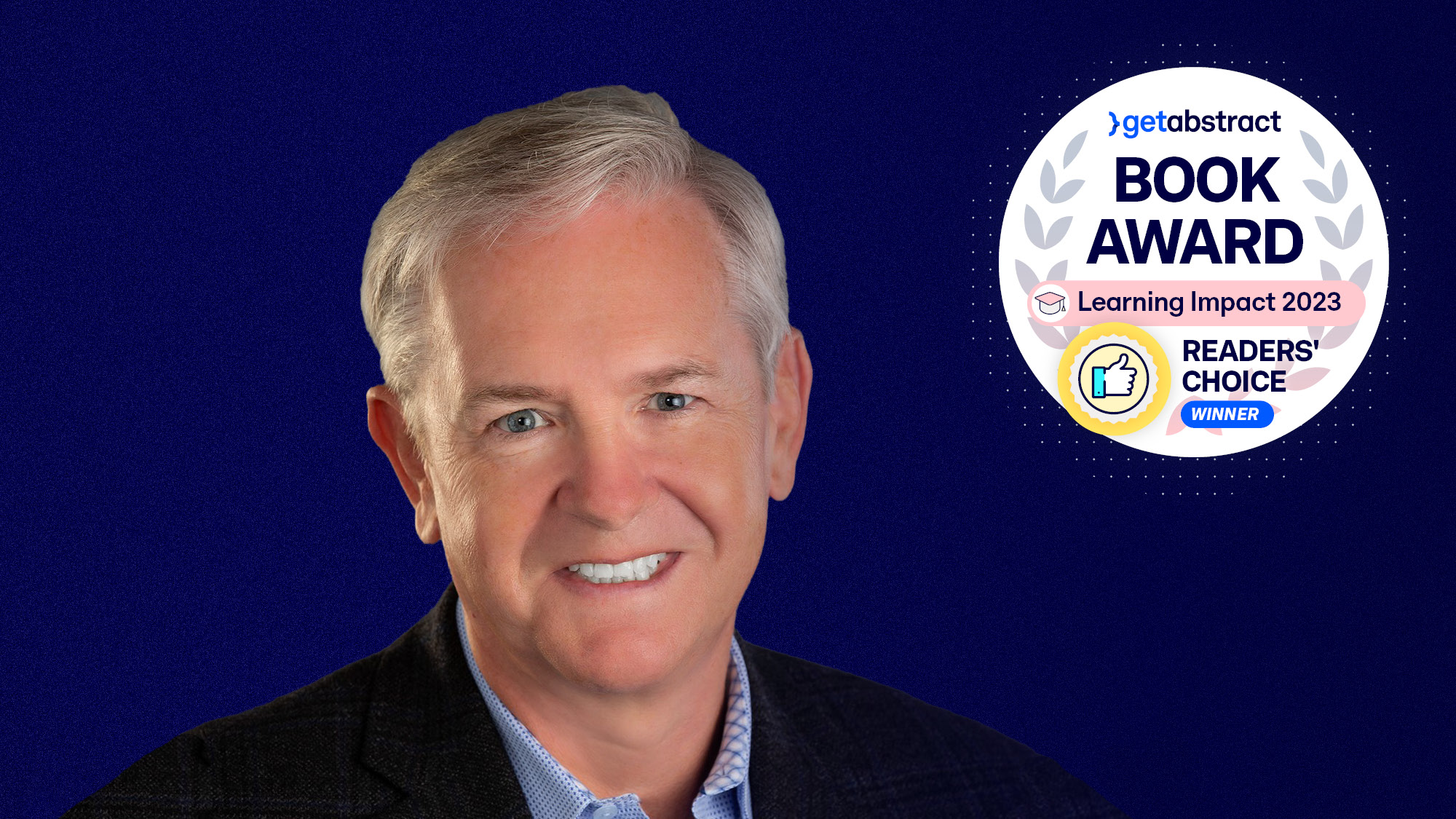“You’ve Got to Understand How the Work You Try to Improve Gets Done.”

Brandon, your L&D’s Playbook for the Digital Age helped talent developers navigate the recent challenges brought about by the COVID-19 pandemic. So, what learning – and learning design – trends do you think will prevail in the coming years?
Brandon Carson: When I started writing the book, the pandemic was beginning to unfold. Looking back at what insights those two years brought, I would say that a much stronger focus on the employee experience is here to stay. During the pandemic L&D leaders found themselves on center stage – helping to ensure business continuity, heightened responsibility and accountability for employee safety, and wellbeing, which includes mental health and emotional health. These are not just temporary imperatives for our practice. They are now a crucial component of the employee experience today. Many companies now have chief medical officers, for example, and advanced programs to help the workforce find their balance, whatever that may be, especially as work is so rapidly changing.
Speaking of well-being and support: The rapid shift to massive platforms with different learning opportunities has also overwhelmed many. In your book, you wrote that digital learning is about self-directed learning with many different types of media – but how do you ensure people don’t get lost in all the various opportunities and demands?
As Microsoft CEO Satya Nadella said in 2020, many companies “went through two years of digital transformation in two weeks.” So, we had somewhat of an infrastructure established, which was good because we could drive business continuity by rapidly shifting to digital learning. But candidly, that two-year shift has cost us dearly in many ways. And because it’s propagated some bad designs and experiences, we’ve dropped many of these methods. So, the workforce would be saved a lot of frustration and wasted time if, in the future, we learned to identify and weed out poor design before delivering the experience.

How?
Let me give an example. At Walmart, we just delivered a million Samsung devices to our frontline workforce with all the necessary apps for working and learning pre-installed on the phone. This experience is designed to help them be more productive in their work – including the learning they need to do their job. That’s bringing learning into the flow of the work, meeting their demand for digital access and performance support. The latter gives them a lift when they need it. But to identify those moments and situations, L&D needs to be more involved in understanding and designing the work systems and environments themselves.
If we do mobile learning in the flow of work or if we create these performance support systems, we’re designing ‘overlays’ into the existing work environment itself. And if these overlays don’t work, performance declines because they do not help.
So, to prevent this in the first place, we need to focus on performance readiness: We need to see and study actual work environments and workflows to enable that deeper practical application of mastery that gets people ready to perform before they are in the flow of the work. That is why our L&D operating model needs to change in many respects. On a higher level, however, all of these efforts and their success depend on whether we overcome the “slow slog to digital.”
Can you be more specific here?
I still talk to many organizations who are nascent in e-learning design, and even though we’re at least two decades into this technology tsunami, half of all formal corporate training is still delivered in a classroom. This is due to a combination of factors: Our funding models, technology, bureaucracy within companies, our staffing capability, attracting the right people onto L&D teams, and even knowing what skills you need to have. Unfortunately, many organizations bend strongly toward the status quo, and that’s why so many of their digital learning solutions, or their mix of solutions, tend to distract – or awkwardly overlay onto frustrating or bad work situations – which keeps people from optimal performance. Innovating is hard when leaders prefer quickly deploying “fancy” looking digital learning solutions instead of testing tools for true applicability. This slow slog to digital fluency also means we must increase digital literacy among the workforce at every level – including leadership.
Many companies found they were early adopters of “engagement and fun” digital learning tools in the past years. However, now they find that little of the content delivered sticks. So how can you methodically improve the relationship between “time spent” and “actually learned something?”
That’s a good question. And you’re seeing some movement with some startups now, focusing on performance readiness. In my opinion, performance readiness has three components to it. First: competency. We need to drive competency in whatever it may be – that’s the job function or tasks. Second: training. We believe these people can still help the company tomorrow – when job functions or environments might have changed – and we develop them moving forward accordingly. And the third part – practical applicability is often missing in a lot of what we do: providing safe opportunities for the performer to apply their learning through practical application.
Take-Aways:
- Many digital learning solutions, or corporate mixes of solutions, tend to distract – or awkwardly overlay onto frustrating or lousy work situations. This keeps people from optimal performance.
- L&D operating models need to change in many respects: In the digital age, staying in touch with employees and knowing specific workflows is more important than ever before.
- L&D departments are often staffed wrongly. More reliance on science is needed among the L&D staff, not less: from behavioral psychologists to instructional designers to data scientists.
Why is this part often missing?
Because it’s not easy to do, we’re often stuck in this operating model of fire-hosing information and hoping it sticks. Usually, we, as L&D, are decontextualized too much. But then, we don’t have that opportunity to contextualize until the learners are asked to perform in the workplace. But that’s too late.
As an L&D leader, you should constantly ask yourself: Have you assessed your people’s capability to practically apply what you’ve just tried to transfer knowledge to them for?
Can you give an example here?
When I was working at Home Depot, my team developed a mobile app to provide product knowledge for our associates on the sales floor – because they might not have a deep understanding of the more than 50,000 items in a store. Initially, we thought visuals like infographic types of display in this app would be the best way to transfer product knowledge the moment you’re standing in the aisle of a busy store with a customer in front of you. But in our iterations, we quickly found that plain text was much more suitable: When appropriately chunked, this is how they get all the information to share with the customer at a glance. So, you’ve got to understand how the work you try to improve gets done. Knowing this context is crucial, and that includes testing and iteration because context is never a matter of assumptions. That’s why I think the modality is not the challenge. Designing around the modality’s constraints and the environment is the challenge.
Another crucial part of learning design is evaluation. Currently, L&D departments worldwide are piling up mountains of data because most teams struggle with making sense of it – not to mention reporting them back to the C-Level in a meaningful, comparable way. Are there any best practices to avoid the widespread “analysis-paralysis” problem?
I’d be a little provocative here because, for all my 25 years in this industry, this has been the pervasive conversation: How do we know what we’re doing has value? And how do we measure that value by integrating data into our decision-making? There are many correct answers to these questions, and they depend on the organization’s structure, needs, and goals. It’s all out there, but we still hear these questions due to an old problem:
The challenge is not a flood or fire-hose of data – it’s the fact that too many L&D practitioners today are not adequately steeped in the science of what we do. And candidly, over the years, we’ve been compartmentalized, bureaucratized and too resource-starved. We’ve been staffed wrongly.
I’ve been at companies where leaders actually denigrated the science of learning! So, what we don’t need in L&D is less science and evidence. We need much more of it because our businesses are complex and the humans inside the companies that need to perform optimally are even more complex.
What kind of science does it take?
What we do is try to get behavior change in humans. That is probably the most challenging thing to do in the organization. So, we need behavioral psychologists. We need data scientists. We need performance consultants. We need instructional designers that deeply know the mechanics of how adults learn, and that have both business and technology acumen. L&D is probably one of the most critical departments in any organization right now. And yet it is rarely staffed appropriately, and rarely funded properly. What we do today is a science. There’s an art to this as well, but the science needs to come first. And when we connect the science of learning to achieve business outcomes, measuring is second nature. We shouldn’t be doing any activity in L&D if it’s not tied to a performance outcome, period.
If you find yourself doing this job because some executive wants something, that’s dangerous.
That sounds like a mission. But things look different, don’t they? When a crisis arises, the first thing to stop is learning – and many L&D managers have long known the game, believing that they have no choice but to nod and cut costs anyway.
Bingo. That’s the problem. But some companies show the way: Before I got to Apple back in the day, I’d already heard about a near economic downturn, so we had layoff pressure applied to our group. But the thinking at Apple at the time was: Okay, we’re having an economic downturn, so there will probably be some cuts. But Steve Jobs’s perspective was: No, this is definitely not the time to cut. This is the time to increase development. His idea was: When you get into these inflationary periods, bad business cycles or whatever may happen, let’s first pause and think: your enterprise assets are your people. So, rushing to layoffs may not be how you want to think about it. Rushing to even more development because you know the downturn is going to be a cycle and will come back. Those are hard business decisions that usually happen at a level much higher than mine. Still, we need to leverage the bad economic times to provide more development, time that is very scarce in boom phases.
This is especially true when the primary concern of companies is talent shortages. Some with excellent learning cultures believe that their constant effort regarding their employees’ future readiness is an asset in better times and helps retention in bad ones. However, other organizations are more skeptical and fear that people will be even more ready to leave after excellent training. How do you see this “tradeoff?”
That’s a good point. I think a lot of companies are at this inflection point. We all had some daunting challenges over the last two years, with people wanting to redefine what work means to them and what they want out of work. But I think if you genuinely foster a culture of learning and you assertively work on your talent pipeline, and you’re confident that you’re developing leaders and workers at all levels, I wouldn’t even worry about someone leaving the company. Simply because you’ve strengthened your pipeline – so you’re ready. Ready to move people into roles because they are capable and seek new experiences. Some of the research we’ve done at Walmart tells us that people are deeply interested in development opportunities. In some positions, that desire for development even outweighs their salary because people are concerned about the future of work, and the impact of automation and digital technology.
Employees expect the company they work for to provide support in future-proofing themselves.
Do you mean seeing the current situation as a two-way street is often more of a leadership problem?
That’s what we’ve seen in the years since L&D’s Playbook for the Digital Age was published: Employees expect more. They want opportunity and that opportunity to be made visible to them. And they want it sooner than before. That’s at least challenging for many leaders because within an authentic learning culture, they need to be both: coaches and talent developers at every level. It’s a new skill, a new muscle for some leaders, and one we’re assertively trying to develop. Because making sure that your pipeline of talent from within is as strong as it can be and that you’re continuously developing people so that you’re ready for whatever may happen is a win-win for the workforce and the company. This is said too rarely and not loud enough.
About the Author
Brandon Carson is a leading learning strategist and Global Head of Learning at Starbucks. He also wrote Learning in the Age of Immediacy: 5 Factors for How We Connect, Communicate, and Get Work Done.







